Phytosanitary Practices in the Democratic Republic of Congo: Survey of 500 Market Gardeners in the Kinshasa and Lubumbashi Cities Between 2020-2021
© 2023 PM Ndelo, LM Mputu, Y Nuapia, JD P Ndelo, JK Tuakuila, et al. This is an open-access article distributed under the terms of the Creative Commons Attribution License, which permits unrestricted use, distribution, and reproduction in any medium, provided the original author and source are credited.
Abstract
This study involved a survey on phytosanitary practices among 500 market gardeners in the cities of Kinshasa and Lubumbashi in the Democratic Republic of Congo (DRC). Market gardening was practiced by 56.2% of men and 43.8% by women. The average age was 42 ± 8.7 years. Most producers (77.4%) had at least a secondary level of education (Primary School Diploma). Only 9.4% of respondents had been trained in the proper use of plant protection products. Thiodan-Endosulfan, a prohibited and highly toxic substance, was the most widely used product (93%). None of the market gardeners surveyed were using the recommended rates of insecticides. More than half of the respondents did not wear personal protective equipment when preparing and applying pesticides. Empty pesticide packages were most often abandoned in the fields or discarded in the environment (57%). Phytosanitary practices in the DRC are potentially harmful to the environment, the health of farmers and consumers.
Introduction
The development of sub-Saharan African countries depends on productivity in the agricultural sector. Agriculture is a sector that contributes significantly to the constitution of the Gross Domestic Product (GDP). And accounts for nearly 23% of the GDP of low- income countries [1].
Covering a total area of 234 million hectares, the Democratic Republic of Congo (DRC) has the largest territory in sub-Saharan Africa [2]. In the DRC, the average urban growth rate over the past decade was 4.1%, or 1 million more urban dwellers in Congolese cities each year. If this trend continues, the urban population will double in just 15 years and Kinshasa will become the largest megacity in Africa by 2030. Katanga province is the second largest city in terms of urban population (42%) and the second largest in the country [1].
Rapid urbanization poses challenges in terms of food supply and job opportunities. And the urban poor are turning to urban and peri-urban agriculture, especially market gardening, which is increasingly contributing to the food supply of cities, especially for vegetables [3]. Urban and peri-urban market gardening is an agricultural activity that currently constitutes an important source of income for its inhabitants in Kinshasa [4]. It is a source of monetary income for some practitioners, and a strategy for the state to reduce unemployment and fight poverty [5]. In Lubumbashi, market gardening, whether for self-consumption or sale, is part of the livelihood of many households [6].
In order to meet growing demand and achieve economically viable production levels, market gardeners use phytosanitary products against phytophagous, pest attacks and fungal diseases [3]. But the use of these pesticides in pest control is not without consequences for the health of farmers and consumers, as well as for the environment [7].
It is important to remember that plant protection products are toxic and their use can only be accepted or encouraged if their use patterns and risks to human health are fully controlled. For this reason, the use of these products has been strictly regulated. Currently, some pesticides have been banned in Europe and North America for several years, while they are still in use in many developing countries [8]. Indeed, pesticides are used in excessive and unsuitable quantities around the world, particularly in developing countries. For example, the study on peasant phytosanitary practices in the savannahs of Central Africa indicates that farmers do not respect the rates and frequency of pesticide applications to crops [9].
In the Democratic Republic of Congo (DRC), the study on the project to support the rehabilitation and revival of the agricultural sector notes that, on the whole, pesticides are not used according to safety standards. This irrational use can cause potentially harmful effects on human and animal health and the environment. This is because market gardeners most often spray vegetables with a variety of insecticides and fungicides at inappropriate doses. And the doses applied vary from one producer to another [10].
The misuse of these products in the DRC would inevitably pose problems of environmental pollution and the presence of residues in crop products, which can be toxic for consumers. The application of pesticides to crops should therefore comply with the rules of Good Agricultural Practice (GAP) to guarantee food safety and environmental protection. The objective of this study was to assess the phytosanitary knowledge and practices of market gardeners in the cities of Kinshasa and Lubumbashi in the DRC.
Methods
Choice of Study Area
The study was conducted in the 2 largest urban cities of the DRC. The choice of these cities is justified by their strong urban and peri-urban agricultural activities. We had a total of 7 municipalities listed in each of the two cities. We then divided the market garden sites into two groups, according to the level of agglomeration and distance from urban centres in each city. This was in anticipation of the characteristics of the respondents, which could be different depending on the environment. As geographical accessibility prevailed, the areas listed were reduced to 18 for Kinshasa and 10 for Lubumbashi. And in each group, the survey sites were randomly selected to constitute a total sample of 7 sites for Kinshasa and 7 for Lubumbashi.
Data Collection Technique
We conducted a cross-sectional descriptive epidemiological study on good phytosanitary practices among 500 market gardeners in the cities of Kinshasa and Lubumbashi. The data were collected by the method of individual surveys by means of questionnaires and supplemented by our own observations carried out in situ. The data collection period was from 10 October 2020 to 19 February 2021 (October and November 2020 in Kinshasa, January and February 2021 in Lubumbashi)
Data Processing
The analysis of the survey forms was carried out manually. Data were encoded in a database designed in Excel and subjected to univariate (descriptive statistics), bivariate and multivariate analyses using R software version 4.2.1 (2022-06-23 ucrt) - “Funny-Looking Kid” Copyright (C) 2022. The R Foundation for Statistical Computing Platform: x86_64-w64-mingw32/x64 (64-bit). In bivariate analysis, we used the test to compare the two proportions and means of the variables of the two cities. Multiple correspondence analysis (MCA) was used to determine the correlation of variables and the distribution of vegetable growers in relation to pesticide use.
Results
Sociodemographic Characteristics of Market Gardeners 56.2% of the market gardeners surveyed are men and 43.8% are women. The age of producers ranges from 14 to over 50 years old, with 47.90% having an age between 30 and 40. The average age is 42 ± 8.81 years. The majority of producers (79.6%) have a secondary or primary school education. In terms of level of professional experience,57.2% have more than ten years’ experience, 33.8% between 3 and 10 years, and 9% have two years or less. Most market gardeners do not receive supervision, and only 9.4% have had training in the agricultural field (Table 1).
Table 1: Socio-Demographic Characteristics of Market Gardeners
|
|
Kinshasa (n=250) |
Lubumbashi (n=250) |
Total (n=500) |
|||
|
Number |
% |
Number |
% |
Number |
% |
|
|
Sex |
||||||
|
Male |
147 |
58.8 |
134 |
53.6 |
281 |
56.2 |
|
Female |
103 |
41.2 |
116 |
46.4 |
219 |
43.8 |
|
Status |
||||||
|
Married |
172 |
68.8 |
153 |
61.2 |
325 |
65.0 |
|
Single |
78 |
31.2 |
97 |
38.8 |
175 |
35.0 |
|
Level of education |
||||||
|
None |
60 |
24.0 |
42 |
16.8 |
102 |
20.4 |
|
Primary |
143 |
57.2 |
142 |
56.8 |
285 |
57.0 |
|
Secondary |
47 |
18.2 |
66 |
26.4 |
113 |
22.6 |
|
Agricultural training |
38 |
15.2 |
9 |
3.6 |
47 |
9.4 |
|
Experience in the field |
||||||
|
0-2 years |
22 |
8.8 |
23 |
9.2 |
45 |
9.0 |
|
2-10 years |
71 |
28.4 |
143 |
57.2 |
214 |
42.8 |
|
≥ 10 years |
157 |
62.8 |
129 |
51.6 |
286 |
57.2 |
Phytosanitary Practices of Market Gardeners
Hygienic Measures During the Application of Pesticides
The vast majority of market gardeners, i.e., 50.6%, do not take protective precautions when applying pesticides. They claim that protective equipment is expensive or say they are used to the products. They are mostly barefoot or with slippers. Only 8% wear boots or ankle boots. Some wear leather work shoes or canvas shoes that are not waterproof and suitable for phytosanitary treatments. Less than one-fifth, or 14.2%, own protective masks. The most commonly used protective material is the glove (20.8%). The muffler is worn by 6.8% of them (Table 2)
Table 2: Protective Measures During Pesticide Application
|
Protective Equipment |
Kinshasa (n=230) |
Lubumbashi(n=227) |
Total (n=447) |
|||
|
Number |
% |
Number |
% |
Number |
% |
|
|
Total Protective Equipment |
0 |
0.0 |
0 |
0.0 |
0 |
0.0 |
|
Closed boots/shoes |
16 |
5.6 |
20 |
8.8 |
36 |
8.0 |
|
Gloves |
37 |
16 |
67 |
29.5 |
104 |
20.8 |
|
Muffler |
3 |
1.3 |
31 |
13.6 |
34 |
6.8 |
|
Mask |
49 |
21.3 |
22 |
9.6 |
71 |
14.2 |
|
No protection |
144 |
62.6 |
109 |
48.0 |
253 |
50.6 |
Pesticides Identified
Organophosphates (32%) come first, 33.3% in Lubumbashi and 27.2% in Kinshasa. This is followed by pyrethroids (25%) with 36, 3% and 21.7% respectively in Kinshasa and Lubumbashi.
Carbamates 20.4% and organochlorines 13.6%. (Figure 1). Forty- four end-use products were identified in the two cities. With 9% found in both Kinshasa and Lubumbashi under the same names. The formulations are of various forms: emulsifiable concentrates (EC) in the majority (86%), wettable powders (WP) and granules (GR). Among the products listed, the insecticide family is the most represented (81%) (data unpresented). Lambda-cyhalothrin (18.1%) and dichlorvos (18.1%) are in equal proportions, with the active substances constituting the majority of the formulations identified. The most frequently used formulations are, in order of importance: Thiodan-Endosulfan, Pacha-Lambda cyhalothrin acetamiprid, Manganese Maneb-(dithiocarbamate), Zalang- Lambda-cyhalothrin, DDT, Malathion, Bloom-Dichlorvos, Doom- Dichlorvos, Karate-Lambda Cyhalothrin, Gardon-Dichlorvos, Kick-Boxer-Lambda-cyhalotrin, ivory-mancozeb, Rogor- Dimethoate, coga 80 WP-mancozeb. The majority of producers (93%) use Thiodan, a prohibited and extremely toxic pesticide (data unpresented).
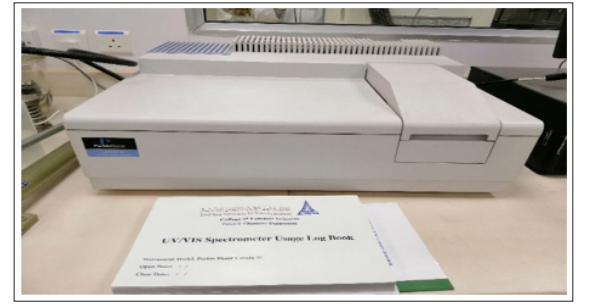
Figure 1: Proportion By Type of Pesticide Used
Application Rates
The survey showed that market gardeners do not apply the application rates indicated by the manufacturer. Doses are variously assessed without reference to usage specifications as recommended by good practice. The majority, i.e., 88%, use makeshift measuring elements: caps on the bottles of phytosanitary product containers, spoons, empty tomato cans, etc. to determine how much to apply.
Application frequencies: Our results indicate that the frequency of pesticide application varies from one market gardener to another, without reference to the active ingredient and the type of crop. They carry out treatments according to their own schedule. Thus, per production cycle, the majority of them (56.6%) carry out two treatments per week. Thirty-one percent once a week, and 12.4% do so 3 times a week (Figure 2).

Figure 2: Application Frequencies
Timing of processing: The majority of producers (55.7%) carry out phytosanitary treatments between 9 and 12 hours. 55.8% of respondents were in Kinshasa and 54.5% in Lubumbashi. Nearly 22% do so after 3 p.m. (21% in Lubumbashi and 22.3% in Lubumbashi). For the hours before 9 a.m. and after 3 p.m., 14.9% and 7.8% producers were recorded for the two cities respectively (Table 3). These schedules concern both the preparation of the porridge and the spreading of the products.
Table 3: Timing of Phytosanitary Treatment
|
Timing of processing |
Kinshasa (%) |
Lubumbashi (%) |
Total (%) |
|
Before 9 h |
11,3 |
18 ,6 |
14,9 |
|
Between 9h and 12h |
56,8 |
54 ,5 |
55,7 |
|
Between 12h and 15 h |
9,6 |
5,9 |
7,8 |
|
After 15 h |
22 ,3 |
21 |
21,6 |
Pre-Harvest Intervals (DAR)
This is the basic interval between the last day of application and the last day of harvest. The producers surveyed assess this period according to whether a buyer comes forward, and without reference to the manufacturers’ recommendations for use. Thus, 39% of market gardeners observed a delay of less than 7 days, 47% a delay between 7 and 14 days and only 14% observed a DAR of two weeks (Figure 3). None of the market gardeners surveyed are aware of the return period. This is the length of time that people are prohibited from entering the plot where a product has been sprayed or powdered. Some enter it just a few minutes after application.
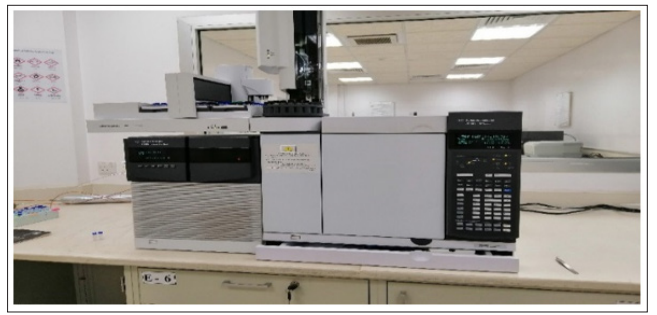
Figure 3: Post-harvest timeframes
Symptoms of Poisoning Experienced by Growers After Pesticide Application
Most growers admitted to feeling unwell after applying synthetic insecticides (76%). All producers attribute these conditions to the products used. Skin irritation (44% of cases), eye condition (13%), nausea (6%), diarrhea (5%), cold (5%), sore throat (4%) (Figure 4). Only 19% of respondents visit health centres for treatment. Some use one or the other pharmaceutical product by self-medication and others use leaf infused, palm oil or milk taken orally.
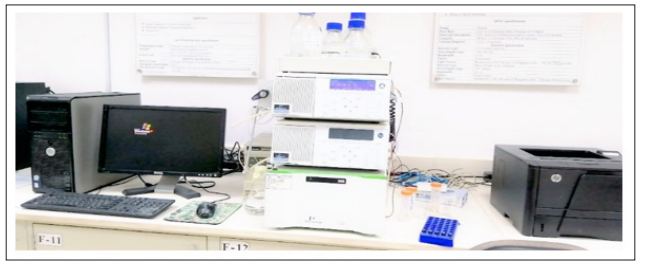
Figure 4: Symptoms of Poisoning
Packaging Management
Packaging that has contained pesticides is only very rarely destroyed. They are most often discarded. Some even reuse them to preserve cooking salt, oil and other food products. The majority of market gardeners (80.1%) throw them away after use. A few incinerate them (8.4%), others (4.9%) reuse them for the same purpose, some (4.4%) bury them in the ground, and 2.2% use them for domestic uses (Figure 5).
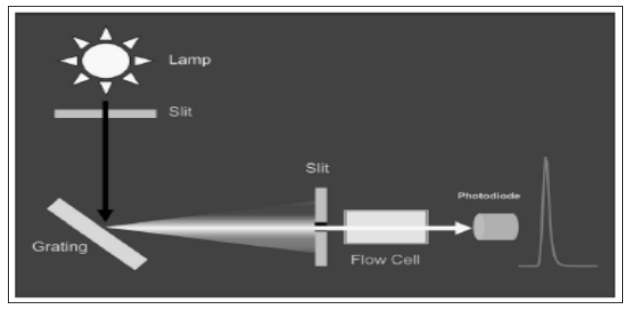
Figure 5: Packaging Management After Use
Multiple Correspondence Analysis (MCA)
The analysis of the eigenvalues reveals a regular decrease without any apparent break between the dimensions, except between the first and second dimensions of the ACM. There are two groups of variables. The first group on the left with no or low correlation and the second group on the right with a high correlation with respect to Dim 1. The graph of variables for the first two factor axes with 21.05% explained inertia is provided in Figure 6.
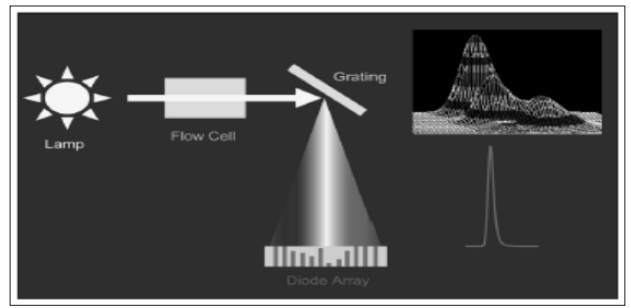
Figure 6: Modalities of Variables in Relation to Axes 1 and 2 (20 Variables)
The maximum amount of information contained in the dataset is provided by 48 Dim. With 21.5% inertia, this also means that the diversity of profiles of market gardeners in Kinshasa and Lubumbashi as well as their phytosanitary practices could not be summarized by only two dimensions. By removing the 5 uncorrelated variables, the level of explained inertia increases to 28.66%, as shown in Figure 3, with the number of Dimensions reduced to 34 to provide the maximum amount of information in our dataset (Figure 7)
This cluster 2 is opposed to the first two in terms of the use of types of pesticides. Clusters 1 and 2 are composed of 457 individuals, characterized by the use of synthetic chemical pesticides (92%). Of these, 227 are from Kinshasa and 230 from Lubumbashi (Figure 9).
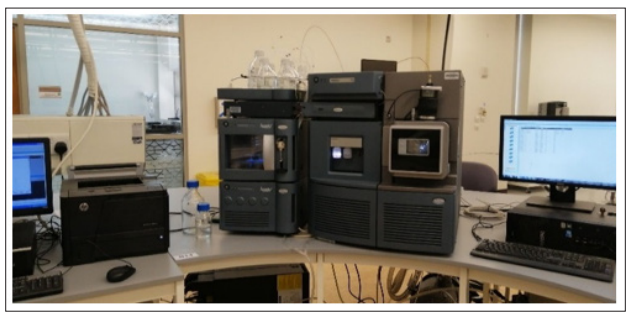
Figure 7: Modalities of Variables in Relation to Axes 1 and 2 (13 Variables)
Figure 8 shows us that when we remove all the variables on the left to retain only the 8 positively correlated of the group on the right, the level of inertia explained becomes 33.62% with a number of Dimensions reduced to 25 to provide the maximum amount of information from our dataset.
Thus, in the first graph, the first sixteen axes explain 61.9% of the total inertia (Figure 6). As for the second graph, the first ten axes explain 60.19% of the information and the first sixteen axes 76.2% (Figure 7). For the third graph, the first eight axes explain 61.43% of the information and the first sixteen 86.7% (Figure 8).
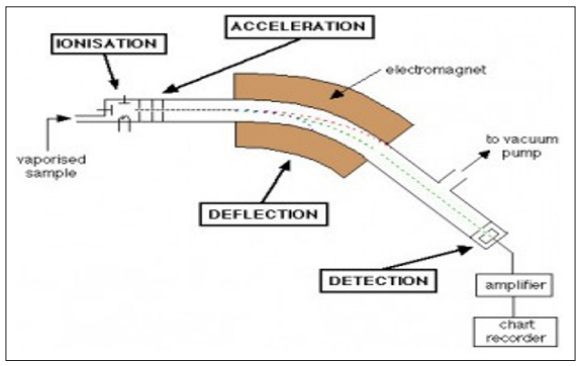
Figure 8: Modality of Variables in Relation to Axes 1 and 2 (8 Variables)
The distribution of market gardeners using pesticides defined by axes 1 and 2 of the CA. Cluster 2 is made up of 43 market gardeners, i.e., 8% of all surveys. These are producers who treat their crops with biopesticides, 23 of whom are from Kinshasa and 20 from Lubumbashi. This group consists of a total of 23 male and 20 female producers.
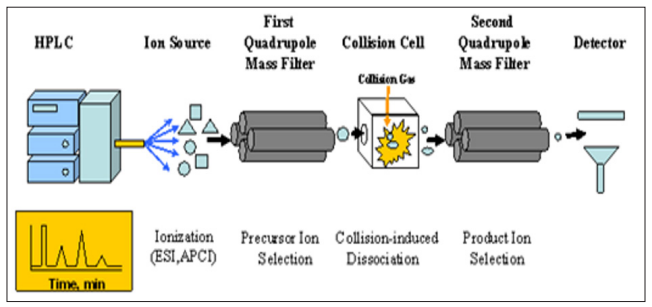
Figure 9: Distribution of Market Gardeners in Lubumbashi and Kinshasa Defined By Axes 1 and 2 of the Acm.
Discussion
The results obtained during this study show that market gardening is carried out slightly more by men (56.2%) than women (43.8%). These results are in line with those of Ngweme (2019) in the DRC. This dominance is much greater in the studies of Muliele et al. in DRC, Azandémé-Hounmalon et al. in Benin as well as Mawussi et al. and Mondedji et al. in Togo [11-14].
The producers were divided into a panel of age groups from 14 to over 50 years old, as in the studies of Rahim et al. in Burkina- Faso, Mawussi et al. in Togo [13,15]. In Fabrice le Bellec’s home in Mauritius, on the other hand, nearly 60% of producers are over 50 years old. In contrast to the study conducted in the Nkolo area of the DRC in which the majority of respondents had secondary education (70%) and primary education (4%); our study found market gardeners with primary education (57%). Our results are similar to those of Mawussi et al. in Togo [13]. This would be one of the factors in the misuse of plant protection products. However, Muliele et al. point out the paradox that Nkolo’s market gardeners, the majority of whom have high school and university degrees (96%), do not use pesticides adequately [11]. In fact, a survey conducted in Senegal by Guèye-Girardet et al. established a positive correlation between the level of education of producers and poor phytosanitary practices [16].
The rate of market gardeners trained in phytosanitary practices is generally low, only 9.4% have had any training in agriculture. These results are similar to those reported by Minengu et al. [17].
In DRC, reporting that the rate of market gardeners trained on pesticide application in Kinshasa was 5.1%. On the contrary, those in the central regions of the Plateaux and Savanes of Togo seem to be better trained, with rates varying between 15 and 25% as reported by Kanda et al. in the DRC even more (41%) [18].
More than half of those surveyed do not take protective precautions when applying pesticides. They claim that protective equipment is expensive, some say it is discomfort from the heat, and others say they are used to the products. These observations corroborate those of the literature [13,18,19]. Many of the producers interviewed use only minimal protection (boots, mufflers, gloves) as reported by [12,13]. None of the market gardeners surveyed resort to wearing full protective clothing. They are limited to wearing ordinary pesticide-permeable clothing, consisting of regular trousers or panties and a long- or short-sleeved shirt. Clothes that are sometimes stored in the same storage areas for phytosanitary products, which leads to their saturation by any toxic vapours that may be released by the products. Worse, some store them in their homes, with all the likely health risks. Son et al. in Burkina Faso, having reported the same observations [20].
59.7% of producers use hand pressure knapsack sprayers. This type of sprayer is not without risks, due to the frequent liquid leaks observed. The remaining 40.3% use branches, tree leaves, palm twigs, canisters with holes in them, and watering cans to sprinkle the porridge. This exposes them to possible risks of poisoning. The distribution of market gardeners in our study by axes 1 and 2 of the ACM reveals one group of users of biopesticides (8%), and two others who use synthetic chemicals (92%). Indeed, Caritas Development with the support of the Catholic Church trains producers in Kinshasa on the use of biopesticides, which are ecological, safe for humans and economical. They promote the use of Titonia diversifolia, a plant species of the Asteraceae family. Their leaves are pounded, dried and macerated before spraying. In Lubumbashi, they use papaya leaves, chili peppers, garlic and soap. Others use the ashes diluted in water.
Insecticides are the most used product category (81%) in the DRC, as found in several studies with organophosphates (32%) and pyrethroids (25%) in the lead [12,13,15]. While throughout the world, herbicides tend to come first, followed by fungicides. This predominance of insecticides in Africa can be explained by the fact that it is the most represented category of products banned by international regulations, but circulating in our countries. The organophosphate family is the most represented of the formulations identified in Lubumbashi (33.3%), while Mushagalusa reported 38% of pyrethroids against 31% of organophosphates in the same city [21]. In Kinshasa, the pyrethrionoids (36.3%) are the most represented, as in the work of Ngweme et al. in Burkina Faso [19].
The most frequently used formulations are, in order of importance: Thiodan-Endosulfan, Pacha-Lambda Cyhalothrin+ Acetamiprid, Maneb-(Dithiocarbamate) Manganese, Zalang- Lambda-Cyhalothrin, DDT-Dichlorodiphenyltrichloroetha ne, Malathion, Bloom-Dichlorvos, Doom-Dichlorvos, Karate- Lambda Cyhalothrin, Gardon-Dichlorvos, Kick-Boxer-Lambda- Cyhalotrin, Ivory-Mancozeb, Rogor-Dimethoate, Coga 80 WP- Mancozeb. Despite the regulations in force in the DRC, the laws are not enforced. A list of banned and registered pesticides exists in the DRC. But it is the banned products such as Dichlorvos, Endosulfan and DDT that are most in circulation. Indeed, the lack of serious border controls favours informal networks.
Market gardeners buy pesticides repackaged in unlabelled bottles from small traders. It is a local service located either next to a large market garden site (such as the one in Cecomaf) or a predominantly agricultural market through which rural farmers also pass (such as the one in Kanda kanda). Thiodan-Endosulfan is the most widely used product (93%) in both Kinshasa and Lubumbashi. Its success can be explained by its affordability, as reported in Minengu’s study with similar results [17]. In contrast, in the 2010 study by Houangninou et al. in Benin, THIONEX 350EC- Endosulfan was found in only one producer (0.5%). Endosulfan and maneb have both high acute and chronic risks [12]. They are not recommended for market gardening. The Intergovernmental Forum on Chemical Safety (IFCS) identifies endosulfan as a highly toxic pesticide that poses significant health problems in developing countries and economies in transition. It is capable of high lethality and significant morbidity. The most common manifestations are neurological, although other organ dysfunctions also occur.
Endosulfan is highly toxic and can be fatal if inhaled, swallowed, or absorbed through the skin. The most severe cases of poisoning have been found in Benin, where deaths have also been recorded among planters and their family members who handled endosulfan [22]. Another study carried out in Benin on food poisoning reported 347 cases of poisoning, including 53 cases of death from endosulfan, which is widely used in particular for food preservation [23]. 105 cases including 9 deaths due to this product were reported between May 2007 and July 2008 in Mali [24]. Active ingredients, such as mancozeb, pose a high chronic risk and lambda-cyhalothrins, acetamiprid, have a high acute risk. DDT is prohibited from production, marketing and use according to international law [25]. Male data indicate a deletion effect of spermatogenesis on menstruation, gestational duration and lactation duration [26]. There is also a strong presumption of a link between occupational exposure to DDT and non-Hodgkin’s lymphoma [27]. One association reports a four-fold increase in the presence of DDT in Alzheimer’s patients Mancozeb had the highest risks to human health with indices of 2289.8, respectively; 3537.8 and 3499.2 in the work of Houangninou et al. [12]. Another study in Benin shows that lambda-cyhalothrin causes adverse effects in humans such as diarrhoea, nausea, etc., while acetamipride causes neurotoxic effects [28,29].
The dosages observed are most often excessive and Market gardeners spray vegetables with a variety of formulations at inappropriate doses. These results are similar to those reported by Muliele in DRC, Houangninou in Benin [11,12]. Many pesticides used in market gardening in the DRC have been repackaged and sold by retailers without a specified dose. Even when indicated, information in foreign languages (English, French) and pictograms according to international standards are poorly understood. This is contrary to the results elsewhere in the literature, where it is found that despite their high illiteracy rate with regard to the French language, producers try to respect the recommended dosage when using pesticides [13,15,19,20]. For the market gardeners we surveyed, there is little difference between the pesticides that can be used. They apply the same doses regardless of the pesticide. The rates applied vary from one producer to another. They apply different doses until they get the effective dose, and sometimes combining different molecules.
The number of applications varies according to the producers’ experiences, as observed by Mawussi et al. in Benin and Kanda et al. in Togo [13,18]. Growers treat their plots without necessarily observing the pest damage threshold. For some, it is necessary to use a preventive treatment at the sprouter. For the others, it is necessary to treat in culture without waiting for the appearance of insects. Some believe that the treatment should be done at a regular frequency as soon as there is the presence of insects in the plot; Some farmers even carry out chemical treatments until the day before harvest, so as not to have insects (aphids or caterpillars) on the products marketed. The pre-harvest deadline is not respected. It is driven by the demands of the market. Indeed, they assess this delay depending on whether a buyer shows up. This observation is in line with those reported elsewhere [13,18]. However, with the use of several pesticides during the vegetative cycle, the ideal SAR would be that of the longest-lived pesticide. Ignorance of this safety rule inevitably leads to the presence of pesticide residues in the vegetables produced, which in turn will be marketed in the markets and end up in the consumer’s dish.
The majority of producers (55.7%) surveyed carry out phytosanitary treatments between 9 and 12 hours. In our temperature conditions, this is not a good time. Indeed, when the temperatures are high it is not advisable to do so. Pesticides are very sensitive to high temperatures. They undergo volatilization that exposes the handler to inhalation. Also, they can pass through the sweat pores on their skin [30]. This inappropriate use of pesticides in the DRC inevitably poses a risk to environmental and human health. This is linked to the many cases of discomfort raised by the market gardeners we met. Indeed, the people interviewed during this study complain of problems with digestive disorders, eye irritation, vomiting, coughing, respiratory disorders, skin irritation and dizziness. This is in line with the observations of Ngweme et al. [19].
To relieve their discomfort, some take a few sips of palm oil or milk. Unaware that they can worsen toxicity by facilitating the absorption of fat-soluble products. Another toxicity factor is non- compliance with the re-entry time. This is the length of time that people are prohibited from entering the plot where a product has been sprayed or powdered. If not indicated on the label, the delay is a minimum of 6 hours. It increases to 24 hours for products that irritate the eyes or skin (pictograms). This is the case of Lambda cyhalothrin, which is widely used in the DRC.
Packaging that has contained pesticides is only very rarely destroyed. They are most often discarded. Other producers abandon them at the edge of market gardening perimeters, which can be dangerous for children. Some even reuse them to preserve cooking salt, keep oil and other food products, as found elsewhere in the literature [13,15,19,20]. With reference to current policies to reduce the use of plant protection products, such as the Ecophyto 2018 Plan, and in view of the information obtained from Congolese market gardeners, the indicators for assessing qualitative phytosanitary risks, namely IFT (Treatment Frequency Indicator), NODU (Number of Doses Used), QS (Quantity of Active Substance) are all in the red [31].
Conclusion
This study shed light on phytosanitary practices in the cities of Kinshasa and Lubumbashi in the DRC. Failure to comply with recommended doses, the use of unregistered and prohibited pesticides, and the lack of personal protective equipment are all practices that dangerously expose the populations of the DRC. The Congolese market gardener, who is poorly educated, practices risky market gardening based on empirical behaviour with regard to the use of pesticides and the management of the harmful effects resulting from this use. The majority of producers recognise the danger of the products and feel their effects. But they ignore the long-term risks to their health, that of consumers and the environment. Faced with these observations, the training of market gardeners on the proper use of pesticides is essential. It is important to strengthen the National Agricultural Investment Programme and to implement existing regulations on the import, distribution, storage and use of pesticides in order to guarantee healthy food to the people of the DRC. In addition, the elimination or substitution of less hazardous products or processes is the priority preventive measure. Thus, it is essential to know the degree of danger of the exposure of the populations of the DRC to the active substances found and dosed in harvested products. We are conducting another study that we are conducting, which is currently being published, addresses this aspect.
Declarations Ethical Approval
The research protocol was approved by the Bio-ethics Committee of the School of Public Health at the University of Kinshasa. Kinshasa, DR Congo.
Competing Interest
The authors declare that they have no known competing financial interests or personal relationships that could have appeared to influence the work reported in this paper.
Authors’ Contributions
The first draft of this manuscript has been written by the first author P .M.N. The co-authors L. M. M. and Y.N. prepared Figures 1-9 and Tables 1-3. The co-authors J. D-P. N .and J.K.T reviewed equally the manuscript. The J.K.T. contributed to supervise all the work and to correspond with the Journal.
Funding
No funding. No specific funds were received for conducting this study.
Availability of Data and Materials
Not Applicable. However, the study results will report to individuals sample donors with proper explanations.
Acknowledgements
We are highly indebted to the study participants and to the staff of investigators, as well as all the local health services and health centers of the Kinshasa and Lubumbashi Public Health Systems that supported the field work. This work was received no financial support.
References
- (2006) Communauté Economique et Monétaire de l’Afrique centrale (CEMAC), règlement n°09 portant adoption de la réglementation commune sur l’homologation des pesticides dans l’espace CEMAK 1-2.
- Sougnabe S, Yandia A, Acheleke J (2009) Pratiques phytosanitaires paysannes dans les savanes d’Afrique centrale, Institut tchadien de recherche agricole pour le développement, ITRAD 1-13.
- Demaimay M, Lavoue G, Feuillat M, Pierrot JP (1972) Essai de dosage qualitatif et quantitatif de quelques pesticides organochlorés dans les produits laitiers par l’utilisation d’un pré colonne en chromatographie gaz-liquide 1-12.
- Samuel O, St-Laurent L, Phaneuf D, Buteau S (2010) Mesures de réduction de l’exposition aux pesticides dans les aliments, institut national de santé publique de Québec, Septembre 9-11.
- Dreyfuss H, Lotfi Marquet Debord JL, Daguet Lachatre (1994) Analyse de résidus de pesticides dans des miels et des pommes par CLHP et CPG, Analysais 22: 1-5.
- (2014) PRRF (Projet de Réduction du Risque de Famine et de l’Amélioration de la Nutrition dans la Région du Kasaï). Rapport final, Mai 2018 / Programme d’investissement pour le foret (pif) plan de gestion des pestes et pesticides (PGPP) en République Démocratique du Congo, avril 2014, projet de gestion améliorée des paysages forestiers (PGAPF).
- Maitelcadi A, Mezzane B, Meddah Y, Khabbal L Idrissi (2009) Intoxications mortelles aux pesticides au Maroc (2000- 2005), revue d’épidémiologie et de santé publique 57: s6.
- Wikha B, Nkumisongo R (2015) Les perspectives de la relance du développement agricole et de l’autosuffisance alimentaire de la RDC suite à l’adoption agricole en mai), Kas African Law study Library 1: 188-206.
- (2019) Procédure d’autorisation des pesticides par l’Union Européenne, Parlement européen, janvier https://www.europa.eu/RegData/etudes/ATAG/2019/630356/EPRS_ATA(2019)630356_FR.pdf
- Calvet R (2005) Les pesticides dans le sol : Conséquences agronomiques et environnementales, France Agricole Editions 1-637.
- Muliele T M, Manzenza CM, Ekuke LW, Kiaka CP, Ndikubwayo DM (2017) Utilisation et gestion des pesticides en cultures maraîchères : cas de la zone de Nkolo dans la province du Kongo Central, République démocratique du Congo. J. Appl. Biosci 119: 11954-11972.
- Hounmalon AG Y (2015) Comportement de Tetranychus evansi sur tomate et interactions avec son prédateur Phytoseiulus longipes. Application pour une stratégie de lutte intégrée en condition Thèse de doctorat 1-184.
- Mawussi G, Kolani L, Devault DA, Alaté KKA (2014) Utilisation de pesticides chimiques dans les systèmes de production maraîchers en Afrique de l’Ouest et conséquences sur les sols et la ressource en eau : Le cas du 44e congrès du Groupe Français des Pesticides. SCHOELCHER 26-29.
- Mondedji AD, Nyamador WS, AmevoinK, Adéoti R, Abbévi AG (2015) Analyse de quelques aspects du système de production légumière et perception des producteurs de l’utilisation d’extraits botaniques dans la gestion des insectes ravageurs des cultures maraîchères au Sud du Togo. Int. J. Biol. Chem. Sci 9: 98-107.
- Rahim R, Drabo SF, Kabore BZA, Salamata S (2020) Evaluation des risques liés aux pratiques phytosanitaires des producteurs maraîchers et mise en évidence de la résistance aux pesticides chez l’aleurode Bemisia tabaci (Hemiptera : Aleyrodidae) au Burkina Faso, Afrique de l’Ouest. REV. RAMRES 8: 90-99.
- Guèye Girardet A (2010) Évaluation des pratiques d’irrigation, de fertilisation et d’application des pesticides dans l’agriculture périurbaine de Dakar, Sénégal. Thèse de doctorat de l’université de Lausanne 1-192.
- Minengu JD, Ikonso AM, Mbumba MB, Kawanga R, Mangunda O, (2021) Utilisation des pesticides de synthèse dans la production maraîchère à Rev. Afr. Environ. Agricul 2: 14-29.
- Kanda M, Djaneye Boundjou G, Wala K, Gnandi K, Batawila K, et al. (2013) Application des pesticides en agriculture maraîchère au Togo. VertigO. Rev. Élec. Sci. Environ 13: 1-25.
- Ngweme G N, Kiyombo G M, Sikulisimwa C P, Mulaji C K, Komanda J A (2019) Analyse des connaissances, attitudes et pratiques des maraîchers de la Ville de Kinshasa en rapport avec l’utilisation des pesticides et l’impact sur la santé humaine et sur l’environnement. Int. J. Inn. Appl. Studies 35: 14-19.
- Son D, Somda I, Legreve A, Schiffers B (2017) Pratiques phytosanitaires des producteurs de tomates du Burkina Faso et risques pour la santé et l’environnement. Cahier Agricul 26: 25005.
- Mushagalusa B (2019) Drivers of adoption of integrated pest management among small-scale vegetable farmers in Lubumbashi, DR Congo. Am. J. Rur. Dev 7: 53-59.
- (2008) Déclaration écrite commune du groupe de travail PAN International sur les alternatives aux pesticides synthétiques, Introduction progressive d’alternatives à l’endosulfan, PAN Germany pour PAN International, Hambourg, Octobre 1-8.
- Badarou S, Coppieters P (2009) Intoxications alimentaires dues à l’endosulfan : mise en place d’un système de notification et de prise en charge au Bénin, environnement risque et santé. ERS 8: 133-136.
- Badarou S, Coppieters P (2009) Intoxications alimentaires dues à l’endosulfan : mise en place d’un système de notification et de prise en charge au Bénin. ERS 8: 133-136.
- (2004) Règlement 850/2004 du Parlement européen et du Conseil du 29 avril 2004 concernant les polluants organiques persistants et modifiant la directive 79/117/CEE 15: 465-485.
- Capolaghi B, Moulsma M, Houdret N, Baud F J (2000) Stratégies analytiques en toxicologie d’urgence. Toxicol. Anal 12: 274-281.
- Tarla DN, Meutchieye F, Assako V A, Fontem DN, Kome JJA (2013) Full Length Research Paper Exposure of market gardeners during pesticide application in the western highlands of Cameroon Scholarly. J. Agricul. Sci 3: 1-7.
- Zioui M, Zoubir M (2012) Etude épidémiologique et pronostique des intoxications aigues au sein du service des urgences de l’hôpital militaire avicenne de Marrakech : durée de l’étude 10 ans : 2000 - 2009, Faculté de médecine et de pharmacie-Marrakech thèse n° 2012, Marrakech 1-6.
- C Ahouangninou, S Yacin, W Boko, J Logo (2022) Africa science, Analyse des déterminants des pratiques phytosanitaires des producteurs maraîchers au sud du Bénin, Bulletin OEPP/EPPO, Revue des aspects réglementaires de la protection des végétaux 52: 1-15.
- (2018) Plan Ecophyto 2018 de Reduction des usages de pesticides, ministère de l’Agriculture, France 1-21.
- Mayulu J M (2014) Etude des possibilités de cultures de Jatropha curcas dans la ville de Kinshasa (République Démocratique du Congo), Gembloux agro-bio Tech 1-189.

